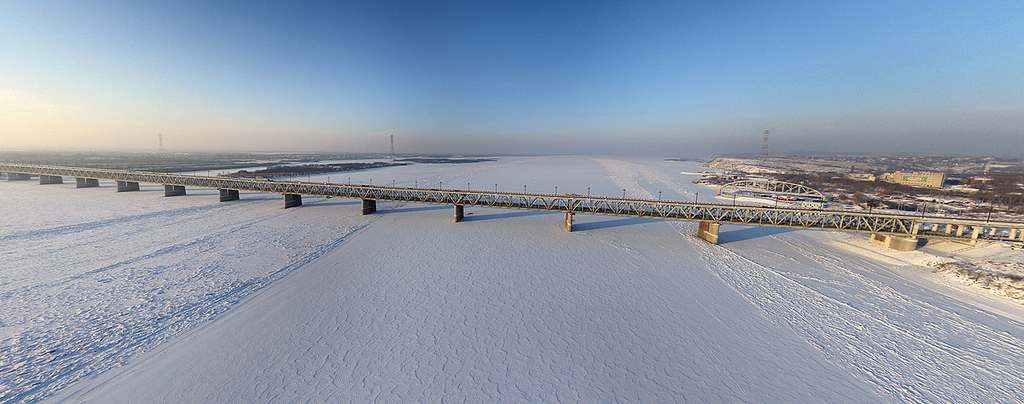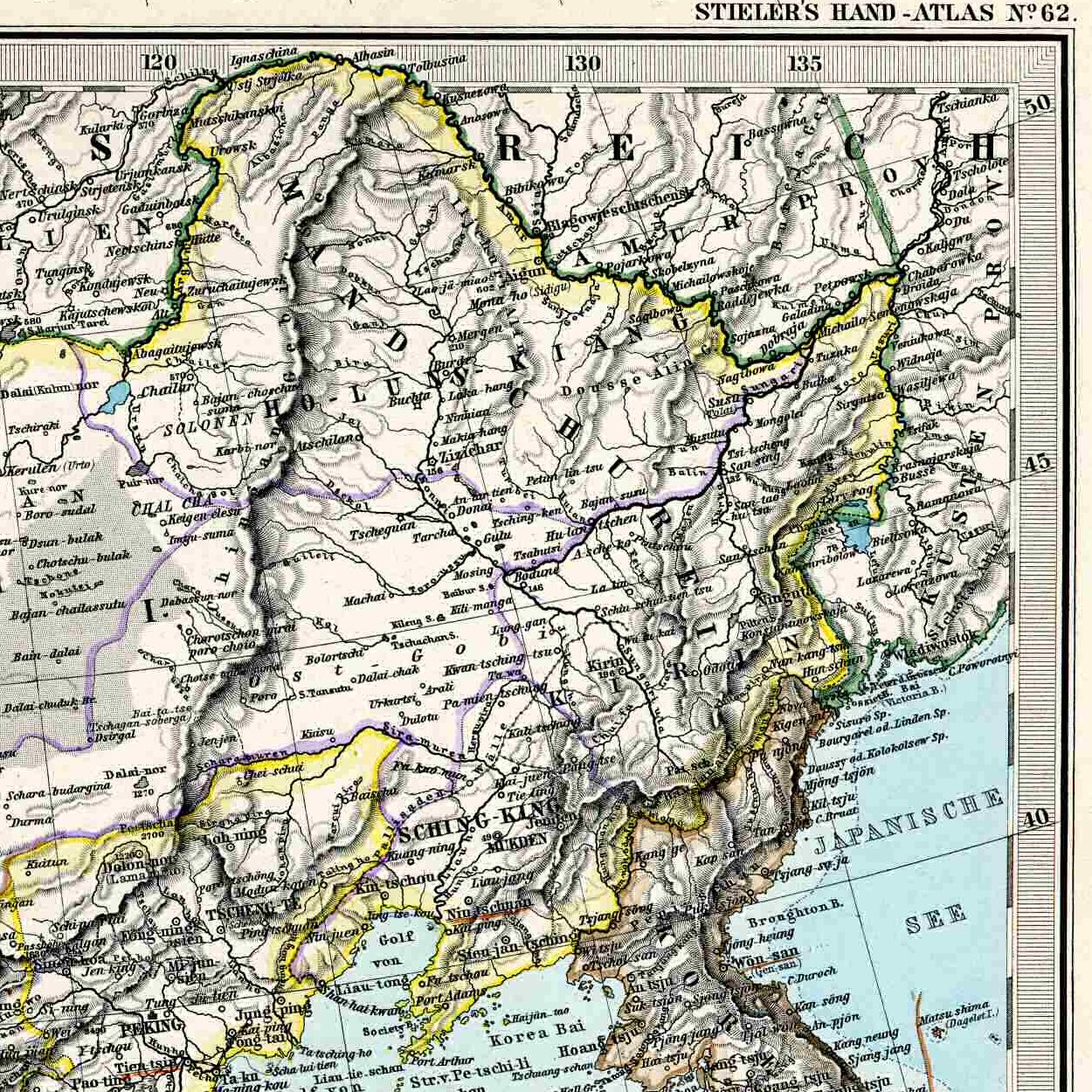|
Obluchensky District
Obluchensky District (russian: Облученский райо́н) is an administrativeLaw #982-OZ and municipalLaw #229-OZ district ( raion), one of the five in the Jewish Autonomous Oblast, Russia. It is located in the north, east, and center of the autonomous oblast. The area of the district is . Its administrative center is the town of Obluchye. Population: 29,035 ( 2010 Census); The population of Obluchye accounts for 32.3% of the district's total population. Geography Obluchensky District is located in the northwest region of the Jewish Autonomous Oblast; it is the largest district in the oblast. About 50 km of the Amur River runs along the western border of Obluchensky. The district is dominated by mountain ranges such as the Bureya Range with high Mount Studencheskaya, the highest point of the oblast, and the Lesser Khingan, through which flow the upper and middle reaches of the Bira River. The Bira basin runs west-to-east through the middle of the district, and ... [...More Info...] [...Related Items...] OR: [Wikipedia] [Google] [Baidu] |
Jewish Autonomous Oblast
The Jewish Autonomous Oblast (JAO; russian: Евре́йская автоно́мная о́бласть, (ЕАО); yi, ייִדישע אװטאָנאָמע געגנט, ; )In standard Yiddish: , ''Yidishe Oytonome Gegnt'' is a federal subject of Russia in the Russian Far East, bordering Khabarovsk Krai and Amur Oblast in Russia and Heilongjiang province in China. Its administrative center is the town of Birobidzhan. The JAO was designated by a Soviet official decree in 1928, and officially established in 1934. At its height, in the late 1940s, the Jewish population in the region peaked around 46,000–50,000, approximately 25% of the population. As of the 2010 Census, JAO's total population was 176,558 people, or 0.1% of the total population of Russia. By 2010, there were only 1,628 Jews remaining in the JAO, or fewer than 1% of the population, according to data provided by the Russian Census Bureau, while ethnic Russians made up 92.7% of the JAO population. Judaism is practic ... [...More Info...] [...Related Items...] OR: [Wikipedia] [Google] [Baidu] |
Bureya Range
, photo = Korbohon.jpg , photo_alt = , photo_caption = View of Korbokhon lake at the northern end of the range , country_type = , country = Russia , country1 = , country2 = , region_type = , region = Khabarovsk Krai Jewish Autonomous Oblast , region1 = , border = , border1 = , biome = , highest = Unnamed , elevation_m = 2167 , elevation_system = , elevation_note = , coordinates = , coordinates_note = , length_km = 400 , width_km = , area_km2 = , length_orientation = , width_orientation = , length_note = , width_note = , area_note = , range_coordinates = , range_coordinates_note = , geology = Granite, gneiss, sediment ... [...More Info...] [...Related Items...] OR: [Wikipedia] [Google] [Baidu] |
Leninsky District, Jewish Autonomous Oblast
Leninsky District (russian: Ле́нинский райо́н) is an administrativeLaw #982-OZ and municipalLaw #231-OZ district (raion), one of the five in the Jewish Autonomous Oblast, Russia. It is located in the south and center of the autonomous oblast. The area of the district is . Its administrative center is the rural locality (a '' selo'') of Leninskoye. Population: 20,684 ( 2010 Census); The population of Leninskoye accounts for 29.5% of the district's total population. Geography Leninsky District is located in the south central region of the Jewish Autonomous Oblast. About 132 km of the Amur River runs along the southern border of Leninsky. The district is about 160 km west of the city of Khabarovsk, and the area measures 90 km (north-south) by 100 km (west-east). About 60% of the district is on the Middle Plain of the Amur River, with the remainder on the northern foothills of the Lesser Khingan mountains. The area has commercial deposits of building materia ... [...More Info...] [...Related Items...] OR: [Wikipedia] [Google] [Baidu] |
Birobidzhansky District
Birobidzhansky District (russian: Биробиджа́нский райо́н, yi, ביראָבידזשאַן סקי דיסטריקט) is an administrativeLaw #982-OZ and municipalLaw #227-OZ district (raion), one of the five in the Jewish Autonomous Oblast, Russia. It is located in the center of the autonomous oblast. The area of the district is . Its administrative center is the town of Birobidzhan (which is not administratively a part of the district). Population: 11,907 ( 2010 Census); Geography Birobidzhansky District is located in the central of the Jewish Autonomous Oblast. The main river in the district is the Bira River, which runs north-to-south through the district. About 20 km of the Amur River runs along the southern border of Birobidzhansky. The district is about 125 km west of the city of Khabarovsk, and the area measures 90 km (north-south) by 70 km (west-east). The administrative center, Birobidzhan, straddles the Bira River in the nort ... [...More Info...] [...Related Items...] OR: [Wikipedia] [Google] [Baidu] |
Khabarovsk Krai
Khabarovsk Krai ( rus, Хабаровский край, r=Khabarovsky kray, p=xɐˈbarəfskʲɪj kraj) is a federal subject (a krai) of Russia. It is geographically located in the Russian Far East and is a part of the Far Eastern Federal District. The administrative centre of the krai is the city of Khabarovsk, which is home to roughly half of the krai's population and the largest city in the Russian Far East (just ahead of Vladivostok). Khabarovsk Krai is the fourth-largest federal subject by area, and has a population of 1,343,869 as of 2010. The southern region lies mostly in the basin of the lower Amur River, with the mouth of the river located at Nikolaevsk-on-Amur draining into the Strait of Tartary, which separates Khabarovsk Krai from the island of Sakhalin. The north occupies a vast mountainous area along the coastline of the Sea of Okhotsk, a marginal sea of the Pacific Ocean. Khabarovsk Krai is bordered by Magadan Oblast to the north, Amur Oblast, Jewish Au ... [...More Info...] [...Related Items...] OR: [Wikipedia] [Google] [Baidu] |
Bastak Nature Reserve
Bastak Nature Reserve (russian: Бастак заповедник) (also Bastack) is a Russian 'zapovednik' (strict nature reserve) located in the Amur River basin in the Russian Far East. The reserve's territory covers the south-eastern spurs Bureya Range and the northern outskirts of the Sredneamurskaya lowlands. The reserve is situated in about 10 km north of the city of Birobidzhan in the Birobidzhansky District, and is the only national reserve in the Jewish Autonomous Oblast. Topography The reserve can be pictured as divided into two halves, mountainous to the northwest, lowlands to the southeast. The highlands of the northwest are south-eastern spurs Khingan-Bureya mountain system, an ancient crystalline massif. The southeast lowlands of the reserve are part of the Sikhote-Alin Mountain fold system. The mountain ridges run north-south, which is typical for the Far East. In the north of the reserve, the mountains range up to 1,207 meters in altitude (Mt. Byrdyr), w ... [...More Info...] [...Related Items...] OR: [Wikipedia] [Google] [Baidu] |
Khabarovsk
Khabarovsk ( rus, Хабaровск, a=Хабаровск.ogg, r=Habárovsk, p=xɐˈbarəfsk) is the largest types of inhabited localities in Russia, city and the administrative centre of Khabarovsk Krai, Russia,Law #109 located from the China–Russia border, at the confluence of the Amur River, Amur and Ussuri Rivers, about north of Vladivostok. With a Russian Census (2010), 2010 population of 577,441 it is Russia's easternmost city with more than half a million inhabitants. The city was the administrative center of the Far Eastern Federal District of Russia from 2002 until December 2018, when Vladivostok took over that role. It is the largest city in the Russian Far East, having overtaken Vladivostok in 2015. It was known as ''Khabarovka'' until 1893. As is typical of the interior of the Russian Far East, Khabarovsk has an #Climate, extreme climate with very strong seasonal swings resulting in strong cold winters and relatively hot and humid summers. History Earliest record ... [...More Info...] [...Related Items...] OR: [Wikipedia] [Google] [Baidu] |
Bira River
The Bira (russian: Бира) is a river in the Jewish Autonomous Oblast, Russia. The name derives from the Jurchen and Manchu word ''bira'' meaning "river". It is long, and has a drainage basin of . It is one of the largest, left tributaries of the Amur. Some of the cities that lie along the river are Birakan, Teploozyorsk, Londoko, Bira, Birobidzhan and Nadezhdinskoye. See also *List of rivers of Russia Russia can be divided into a European and an Asian part. The dividing line is generally considered to be the Ural Mountains. The European part is drained into the Arctic Ocean, Baltic Sea, Black Sea, and Caspian Sea. The Asian part is drained into ... References External links * Rivers of Jewish Autonomous Oblast {{Russia-river-stub ... [...More Info...] [...Related Items...] OR: [Wikipedia] [Google] [Baidu] |
Lesser Khingan
Lesser Khingan (; russian: Малый Хинган, ''Maly Khingan'') is a mountain range in China's Heilongjiang province and the adjacent parts of Russia's Amur Oblast and Jewish Autonomous Oblast.Малый Хинган '''' in 30 vols. — Ch. ed. . - 3rd ed. - M. Soviet Encyclopedia, 1969-1978. (in Russian) In Russia, the range is part of the . Geo ...
|
Mount Studencheskaya
Mount Studencheskaya (russian: Гора Студенческая) is a peak in the Jewish Autonomous Oblast, Russia. It is the highest point of the oblast. Description Mount Studencheskaya is a high mountain located near the southern end of the Bureya Range, close to the Khabarovsk Krai border. It rises in the Obluchensky District, on the northern part of the Jewish Autonomous Oblast, north of the valley of the Sutara, one of the rivers forming the Bira, a tributary of the Amur.Google Earth See also * List of highest points of Russian federal subjects * List of mountains and hills of Russia This is a list of mountains and hills of Russia. List by elevation Over 5000 meters 4000 to 4999 meters 3000 to 3999 meters 2000 to 2999 meters 1000 to 1999 meters Under 1000 metres See also *Highest points of Russian Federal s ... References External linksThe Butterfly Fauna (Lepidoptera: Papilionoidea) of Jewish Autonomous Oblast (Russian Far East) Studencheskaya ... [...More Info...] [...Related Items...] OR: [Wikipedia] [Google] [Baidu] |
Amur River
The Amur (russian: река́ Аму́р, ), or Heilong Jiang (, "Black Dragon River", ), is the world's List of longest rivers, tenth longest river, forming the border between the Russian Far East and Northeast China, Northeastern China (Inner Manchuria). The Amur proper is long, and has a drainage basin of . ''mizu'' ("water") in Japanese. The name "Amur" may have evolved from a root word for water, coupled with a size modifier for "Big Water". Its ancient Chinese names were ''Yushui'', ''Wanshui'' and ''Heishui'', formed from variants to ''shui'', meaning "water".The fishes of the Amur River:updated check-list and zoogeography'' The modern Chinese name for the river, ''Heilong Jiang'' means "Cardinal_directions#Cultural_variations, Black Dragon River", while the Manchurian language, Manchurian name ''Sahaliyan Ula'', the Mongolian names " Amar mörön " (Cyrillic: Амар мөрөн) originates from the name " Amar " meaning to rest and ''Khar mörön'' (Cyrillic: Хар � ... [...More Info...] [...Related Items...] OR: [Wikipedia] [Google] [Baidu] |
Types Of Inhabited Localities In Russia
The classification system of inhabited localities in Russia and some other post-Soviet states has certain peculiarities compared with those in other countries. Classes During the Soviet time, each of the republics of the Soviet Union, including the Russian SFSR, had its own legislative documents dealing with classification of inhabited localities. After the dissolution of the Soviet Union, the task of developing and maintaining such classification in Russia was delegated to the federal subjects.Articles 71 and 72 of the Constitution of Russia do not name issues of the administrative and territorial structure among the tasks handled on the federal level or jointly with the governments of the federal subjects. As such, all federal subjects pass their own laws establishing the system of the administrative-territorial divisions on their territories. While currently there are certain peculiarities to classifications used in many federal subjects, they are all still largely ba ... [...More Info...] [...Related Items...] OR: [Wikipedia] [Google] [Baidu] |




